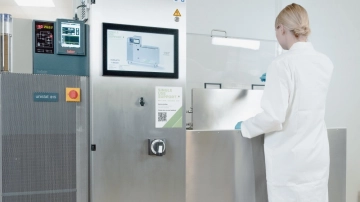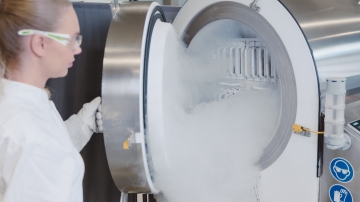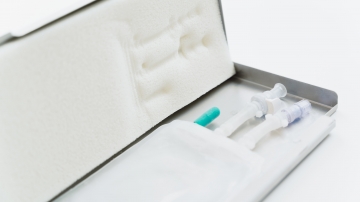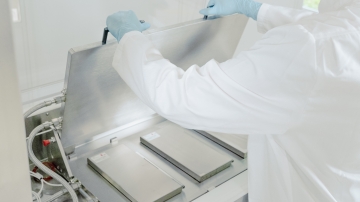DMSO: Freezing Cells
Table of contents
ShowWhat is DMSO?
DMSO, or dimethyl sulfoxide, is a colorless liquid that is used for cell preservation. Thanks to its unique properties, it has found its way into laboratories worldwide. DMSO plays a vital role in protecting cells when temperatures drop.
Why is DMSO used for freezing cells?
In the field of cell cryopreservation in biopharmaceutical research, development and manufacturing, DMSO is an invaluable tool during freezing, thanks to its ability to prevent ice crystals from forming inside cells. Acting as a cellular antifreeze, it keeps cells safe and sound as they undergo the freezing process.
However, there are other cryoprotectants on the market, such as glycerol. While they may have similar properties, DMSO often proves more effective due to its superior ability to penetrate cell membranes and provide protection from the inside out.
DMSO Freezing Point
In the context of freezing cells with DMSO, it is essential to identify the optimal concentration. Insufficient DMSO will not provide adequate protection for the cells, while an excess may result in inadvertent damage.
The majority of scientists utilize a concentration of 5% up to 10% in their freezing medium, as this offers an optimal balance between protection and cellular activity1. This approach can be likened to providing a comfortable winter coat for the cells, ensuring warmth without hindering their mobility.
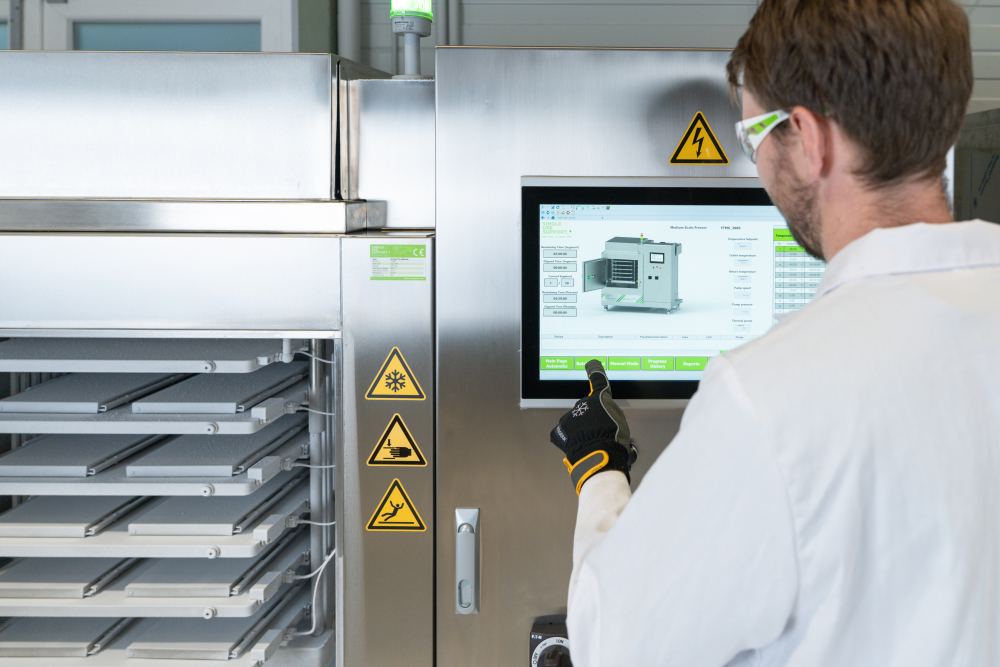
Solutions for cell freezing with DMSO
Freezing cells is a process that requires more than simply placing them in a freezer with dimethyl sulfoxide (DMSO). It is a precise and meticulous process, where precision and expertise are essential. The goal is to achieve high cell viability and therefore high yield for cell-based therapies or cell banking.
What is the key to success? The process is one of controlled rate freezing. This method involves a gradual reduction in temperature, typically at a rate of approximately 1°C per minute2. It is akin to gently immersing the cells in a cold pool, rather than abruptly propelling them into the water.
To achieve this, scientists often utilize specialized equipment. These tools facilitate a seamless transition from room temperature to cryogenic temperatures below -120°C, thereby optimizing cell survival2.
Cell viability after freezing with DMSO
It is important to remember that the objective is to maintain the viability of the cells, ensuring they are ready for use when required.
By ensuring the correct DMSO concentration and implementing a well-designed freezing protocol, you can effectively prepare your cells for cryopreservation. The use of DMSO in cell freezing is a meticulously devised process, crafted to safeguard our cellular assets until they are needed again.
Controlled rate plate freezing platforms can help scientists and manufacturers achieve reproducible and consistent freezing rates across different scales. Single Use Support’s RoSS.pFTU plate freezing & thawing platform, for example, performs freezing protocols according to product specifications to achieve high cell viability during phase transition and below.

App Note
"Bestcellers": Controlled Filling & Freezing of Cells
Advanced fluid and cold chain management for cell culture freezing, cell banking and cell-based therapies.
References
1. Kaiser, D. et al.: Freezing Medium Containing 5% DMSO Enhances the Cell Viability and Recovery Rate After Cryopreservation of Regulatory T Cell Products ex vivo and in vivo, Front Cell Dev Biol. 2021; 9: 750286. Published online 2021 Dec 3. doi: 10.3389/fcell.2021.750286
2. Single Use Support: “Bestcellers“: Controlled Filling & Freezing of Cells; Advanced Fluid Management for Cell Culture Freezing, Cell Banking and Cell Therapy, 2023, Available at: App Note: "Bestcellers": Controlled Filling & Freezing of Cells (susupport.com)



